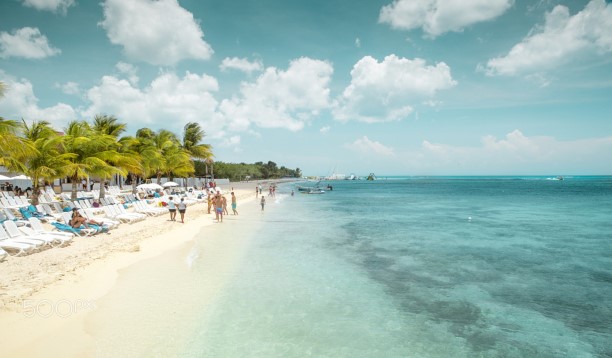Mexico has been able to latch onto the global tourism explosion, and just in time. In this period of great uncertainty, due to the potential impact of the Trump era, the Mexican tourism sector – which already represents 8.5% of the country's GDP – is going through the best period in its entire history, and has become – after the manufacturing sector and remittances – the principal driving force behind the economy. It is, however, starting to show signs of stagnation.
The arrival rate of foreign visitors grew by 9% in 2016, reaching 35 million people. The increase in foreign currency entering the country was 10%; and the tourism industry's account balance (dollar inflow versus dollar outflow) improved by 22% thanks to the fact that there were more foreign visitors entering the country than Mexican citizens traveling abroad.
These three statistical indicators demonstrate that Mexican tourism industry was able to comfortably exceed the world average: good news for a sector which has constantly increasing importance for employment in Mexico.
On weekends and long weekends, especially during the busy season, it is rare for a visitor to be able to make a last minute hotel reservation in Mexico's most touristy areas: the Riviera Maya, Cancun or Mexico City. After the decade's rocky beginnings – due to the influenza A outbreak in Mexico and the major recession, which severely impacted the US economy (the most important contributor to Mexico's tourism sector) – the hospitality sector has managed to take off again during these last few years.
What lies behind these improved results? Specialists in the matter have put forward three factors as an explanation: the weakness of the Mexican peso compared to other international currencies, making Mexico a cheaper tourist destination for foreign visitors; the strength of the US economy, the country which accounts for one third of all visitors to Mexico, as well as the increase in the number of flight connections between Mexico and countries responsible for the majority of Mexican tourism clientele (United States, Canada, Europe, and the rest of Latin America). To these factors should be added the recurrent instability of countries such as Turkey and Egypt which are seen as competitors to Mexico by the European public.
“The Mexican tourism sector is going through a very good period, to the extent that last year it even exceeded our expectations,” said Francisco Madrid Flores, Director of Anáhuac University's Tourism and Gastronomy Faculty – one of the industry's leading experts. Gloria Guevara, former Secretary (Minister) of Tourism, is also optimistic about the “excellence” of the results, as well as about the fact that many Mexicans are changing their plans – instead of traveling to the US in the years to come, they now intend to stay at home.

"They are opting for domestic destinations in order to avoid being mistreated or having a bad experience as well as to support their country at this juncture. This will act as a stimulus to the domestic tourism industry,” highlighted Guevara, a candidate for the position of Secretary General of the World Tourism Organization (UNWTO).
One statistic in particular validates the opinions of these two experts: the last time tourism revenue exceeded the profits derived from the sale of petroleum – the manna of Mexico's economy – was in 1998, and at that time, the barrel price for oil was 10 dollars on international markets, far from the current price of 55 dollars – which is the price it had until last year.
This optimism surrounding the Mexican tourism sector, which is shared by all the analysts who were questioned, cannot however conceal the enormous challenges facing the industry. In an exhaustive report published in January, the Organization for Economic Co-operation and Development (OECD) praised Mexico for its capacity to bounce back after the slump of 2009, but it also pointed out two areas where improvement was needed: the limited contribution made to the development of local economies, as well as the need for an “evolution” from a preeminently mass tourism driven industry towards a more individualized form of tourism with higher added value.